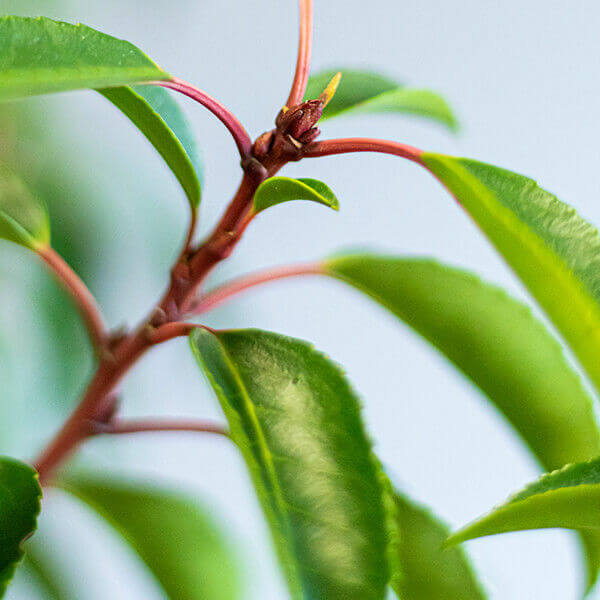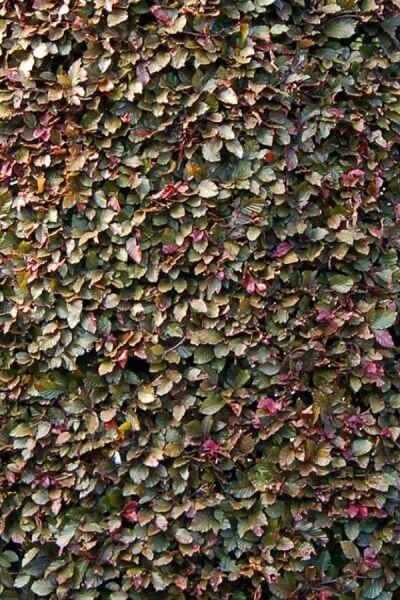Best Hedging Plants For Garden Privacy
Best Hedging Plants For Garden Privacy
Blog Article
Best Hedging Plants For Spring Blooms
Enhance your garden's allure with lush hedge ranges such as Yew (Taxus), Thuja, Laurel, Photinia, and Bamboo, celebrated for their structural stability and environmental advantages.
Yew and Thuja provide evergreen protection and winter season resilience, while Laurel provides quick growth and broad, aromatic leaves.
Photinia includes seasonal charm with its lively red foliage, and Bamboo lends a low-maintenance, peaceful atmosphere.
These hedges improve air quality, lower noise, and produce tranquil, private areas.
Proper planting, spacing, and maintenance guarantee energetic development and ecological consistency.
Explore how these lush ranges can raise your garden's beauty and well-being.
Key Takeaways
Change Your Garden With Lush Hedge Ranges
- Select Yew for its thick, evergreen growth and unrivaled durability.
- Go with Laurel for its quick development and broad leaves, ensuring quick privacy.
- Select Photinia for its dynamic seasonal foliage, which turns a striking dark red.
- Make use of Bamboo for a low-maintenance, winter-hardy hedge with visual appeal.
- Area plants 2-3 per meter and prune frequently for optimum development and health.
Popular Hedge Plants
When transforming a garden with lush hedge varieties, it's important to think about popular hedge plants such as Yew, Thuja, Laurel, and Photinia due to their distinct qualities and advantages.
Yew (Taxus) is highly esteemed for its durability and dense, green development, making it a prime choice for sustaining landscapes.
Thuja is kept in mind for its evergreen foliage and robust winter durability.
Photinia includes seasonal vibrancy with red leaves that darken with time, developing vibrant visual appeal.
Laurel provides fast development and aromatic, broad leaves, perfect for fast personal privacy.
Furthermore, Bamboo is an outstanding choice for ambiance, using a low-maintenance, winter-hardy alternative that improves the garden's aesthetic with its elegant, swaying canes.
These choices deal with a variety of horticultural needs and choices.
Advantages of Garden Hedges
Garden hedges provide a wide variety of benefits, making them an important addition to any landscape. These natural barriers are cost-efficient to implement and supply substantial wind security, enhancing air blood circulation and adding to noise decrease. The dense foliage of hedges like Thuja and Beech ensures personal privacy by obstructing visibility, producing a secluded and serene environment.
Hedges likewise play an essential function in microclimate policy, providing a steady environment that fosters plant development and minimizes temperature level changes. Their detailed leaf structures filter contaminants, enhancing air quality and contributing to a much healthier garden ecosystem.
Additionally, hedges excel in sound reduction, soaking up and deflecting sound waves to lower ambient noise levels. This double functionality of offering both acoustic and visual personal privacy enhances the general harmony and aesthetic appeal of any garden.
Planting and Upkeep Tips
For an effective hedge, meticulous preparation of the planting location is vital. Ensure the soil has appropriate pH and drain to support strong root development.
Area the plants appropriately for the chosen types. Water the hedge frequently throughout its preliminary growth phase, changing as required with seasonal changes.
Implement a methodical bug control and illness prevention method, utilizing organic or chemical treatments when needed. Frequently check for aphids, mites, and fungal infections.
Apply mulch to retain moisture and suppress weeds. Seasonal pruning promotes dense development and air flow, important for plant health.
Following these guidelines will assist you cultivate a lively, well-maintained hedge that improves the charm of your garden.
Spacing and Cutting Standards
Spacing and Cutting Standards
Correct spacing and cutting are vital for cultivating healthy, aesthetically appealing hedges. Adequate spacing ensures each plant receives sufficient nutrients, light, and air flow.
Follow these standards for optimum hedge upkeep:
- Spacing: Position hedge plants 2-3 plants per meter to motivate robust development.
- Pruning Methods: Routine pruning is vital for preserving preferred hedge height and shape. Trim new growth in summer and cut down older wood throughout winter season.
- Seasonal Care: Change trimming methods and schedules according to seasonal requirements to ensure plant health.
- Hedge Height: Frequently display and trim to maintain the desired hedge height and attain consistent aesthetics.
Complying with these actions will guarantee your hedge flourishes, enhancing both the appeal and performance of your garden.
Selecting the Right Hedge
Selecting the Right Hedge
Selecting the proper hedge involves evaluating aspects such as mature height, foliage density, and environmental strength. Successful hedge plant choice needs understanding each types' growth characteristics and site-specific flexibility.
For example, Yew (Taxus) uses outstanding durability and dense development, while Thuja is noteworthy for its winter resilience. In addition, considering upkeep requirements is essential; fast-growing types like Laurel or Privet demand routine trimming, whereas low-maintenance alternatives like Bamboo or Ivy might be more effective for those seeking very little upkeep.
Ecological factors such as soil type, light schedule, and wetness conditions need to also assist the selection procedure. This careful method makes sure the chosen hedges will prosper, providing both functional and aesthetic advantages to the garden landscape.
Shipment and Planting Guidance
To guarantee your hedge plants flourish, they must be delivered by specialized carriers and planted immediately upon arrival.
Follow these necessary steps for effective planting:
- Soil Preparation: Improve the soil with organic matter to improve drain and nutrient material.
- Planting Depth: Create a trench twice the width and equal to the depth of the root ball.
- Watering Methods: Water completely after planting, keeping the soil regularly moist but not saturated.
- Mulching: Apply a layer of mulch to keep wetness and suppress weeds.
Customer Support and Service
Provided the vital function of prompt help in horticultural pursuits, our client assistance team is offered six days a week through telephone, email, and social media to offer expert guidance and swiftly address any concerns. Their devotion to quick action times guarantees consumer complete satisfaction by resolving inquiries related to plant health, optimum planting methods, and upkeep schedules.

Reaction Time
Telephone
Within 24 hours
This detailed support group, enhanced by an outstanding 9.3/ 10 customer ranking, highlights our commitment to enhancing the gardening experience for each client.
Regularly Asked Questions
The Length Of Time Does It Take for Hedge Plants to Develop?
Hedge plants typically need one to three years to end up being fully developed, with the exact period differing by species and growing conditions.
Reliable care during this vital period is vital for robust growth. Constant watering, alert weed control, and suitable fertilizer application are essential in promoting strong root development.
For example, fast-growing types like Laurel might establish more rapidly, while slower-growing varieties such as Yew may take longer. Persistent upkeep accelerates the establishment process, leading to dense and healthy hedges.
What Are the Best Hedge Plants for Personal Privacy?
The concern of the best hedge plants for privacy includes evaluating evergreen and deciduous choices.
Evergreen hedges like Thuja, Laurel, and Cypress supply year-round coverage, ensuring continuous privacy.
On the other hand, deciduous hedges such as Beech offer seasonal privacy, shedding leaves in cooler months.
Secret upkeep tips for privacy hedges include regular trimming, fertilizing in spring, and proper spacing-- generally 2 to 3 plants per meter.
Furthermore, constant watering and persistent weed removal are important for promoting healthy, dense growth.
Can Hedge Plants Draw In Wildlife to My Garden?
Yes, hedge plants can draw in wildlife to your garden by providing important benefits like shelter, food, and nesting websites, therefore boosting regional biodiversity. Yew, holly, and laurel are excellent for bring in birds, while ivy supports a range of bugs.
However, it is essential to keep in mind that there are some downsides, such as increased maintenance to manage bugs and routine upkeep. Thoroughly picking and preserving hedge varieties can assist stabilize these advantages and disadvantages, eventually promoting a vibrant and sustainable community in your garden.
Are There Any Blooming Hedge Plants Available?
Yes, there are flowering hedge plants available that can boost the charm of your garden.
For example, Elaeagnus, likewise called Olive Willow, produces fragrant white flowers in the fall, including a touch of elegance.
Photinia, another popular option, showcases vibrant red leaves that develop into a rich green, developing a vibrant visual impact throughout the seasons.
To make sure these plants here prosper, it's vital to practice appropriate pruning techniques and seasonal upkeep, such as trimming brand-new growth in the summer season and cutting back in the winter season.
These procedures will help preserve the health and visual appeal of your flowering hedges.
How Do I Prevent Bugs in My Hedge Plants?
To prevent insects in hedge plants, use natural bug control methods and preserve correct hedge care. Introduce useful pests like ladybugs, which prey on hazardous insects, to develop a well balanced ecosystem.
Routinely check your hedges for signs of infestation and immediately get rid of any afflicted parts to prevent the spread. Ensure the health of your hedges by applying balanced fertilizers and offering sufficient water.
Use mulching to keep soil wetness and appropriate spacing to minimize plant tension and promote robust development. These practices jointly help in lessening insect problems and preserving a healthy hedge.
Conclusion
In essence, selecting the best hedge varieties such as Yew, Thuja, and Laurel can transform any garden into a tranquil haven. These plants supply year-round plant, improve aesthetic appeal, and offer practical advantages like sound reduction and wind protection.
Proper planting strategies, precise spacing, constant watering, and seasonal trimming are vital for optimum development.
Dependable shipment services and skilled client support make sure a smooth experience from purchase to planting, making it simpler than ever to raise your outdoor space.
Garden hedges use a wide variety of benefits, making them an important addition to any landscape. These natural barriers are economical to implement and provide considerable wind protection, boosting air flow and contributing to sound decrease. The dense foliage of hedges like Thuja and Beech guarantees privacy by blocking visibility, producing a serene and remote environment.

Pruning Techniques: Routine pruning is necessary for keeping wanted hedge height and shape. Trim new development in summer season and cut back older wood throughout winter.
Report this page